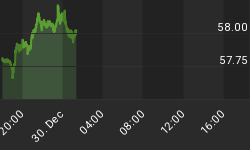The market barely knows how to react to good news and bad news ….
The bad news is that the United States has broken another COVID-19 record as of Wednesday, recording more than 50,000 new cases in a single day, bringing total cases nationwide to 2,686,480.
The good news is a very optimistic jobs report, even if it may end up being fleeting as COVID-19 cases surge to record new heights, threatening the economic reopening.
The anxiously awaited jobs report this morning showed a 4.8-million increase in nonfarm payrolls in June, while the unemployment rate fell to 11.1%, down from its peak of 14.7% in April, according to the Labor Department.
April saw a loss of more than 20 million jobs, and May saw the first gain, which the markets were counting on seeing more of for June. Still June’s numbers are 15 million lower than February’s.
So, the market’s weren’t disappointed--in fact the data exceeded expectations--but will it last?
The markets closed at record highs Thursday.
The Nasdaq Composite index closed up 0.5% at 10,207.63.
The S&P 500 closed up the same percentage, at 3,130.02.
The Dow closed up slightly lower, 0.4%, at 25,827.42.
Many may wish to take the win and run from equities at this point, though, with COVID-19 taking front and center once again.
Breaking down the 50,000 new cases, the loose attention to COVID caution demonstrated by Americans in the summer party season suggests the country is once again heading into big trouble.
Florida alone reported over 10,000 new cases on Thursday--another single-day record for a state and the 25th consecutive day the state has broken a new record.
Overall, for June, Florida saw its COVID-19 infection rate increase by 168%, with over 95,000 new cases.
California--the most populous state--on Wednesday reported nearly 6,900 new cases, while Texas is now up to an average of 6,000 new cases a day--a figure that has quadrupled in a month, leading to new social distancing restrictions.
Arizona reported over 3,300 new cases Thursday.
States are taking steps to walkback economic reopenings, and equities may not have long to cheer the jobs report.
But there is another threat looming, economists have told The New York Times.
Government COVID assistance and unemployment benefits are expiring at the end of this month and the economy may not withstand that.
“We’re in a very deep hole, and we just set ourselves back again,” Diane Swonk, chief economist at the accounting firm Grant Thornton, told NYT. “It’s difficult to climb out of that hole.”
On Thursday, the Congressional Budget Office downgraded its near-term assessment of economic growth, saying that “growth in the second half of 2020 is now projected to be slower”.
This downgrade comes after the CBO’s May projection that real GDP would expand at a 21.5% annual rate in Q3 and a 10.4% annual rate in Q4. Now it is estimating the annual rate at 12.4% for both quarters.
“Following that initial rapid recovery, the economy continues to expand in CBO’s projections, but it does so at a more moderate rate that is similar to the pace of expansion over the past decade,” CBO said.
By Michael Kern for Safehaven.com
More Top Reads From Safehaven.com:

















